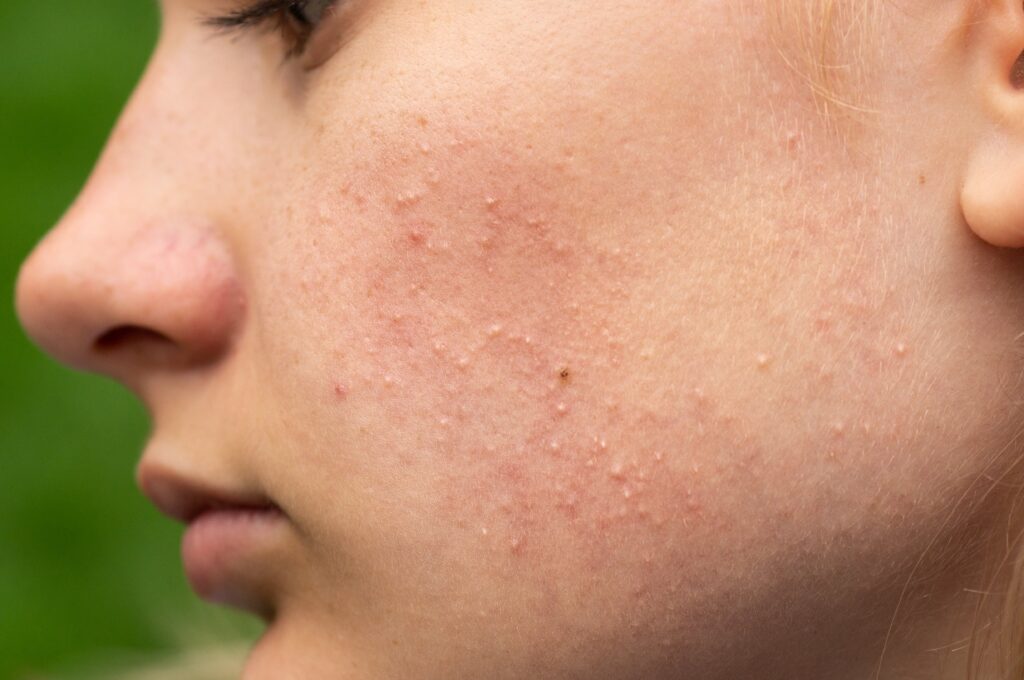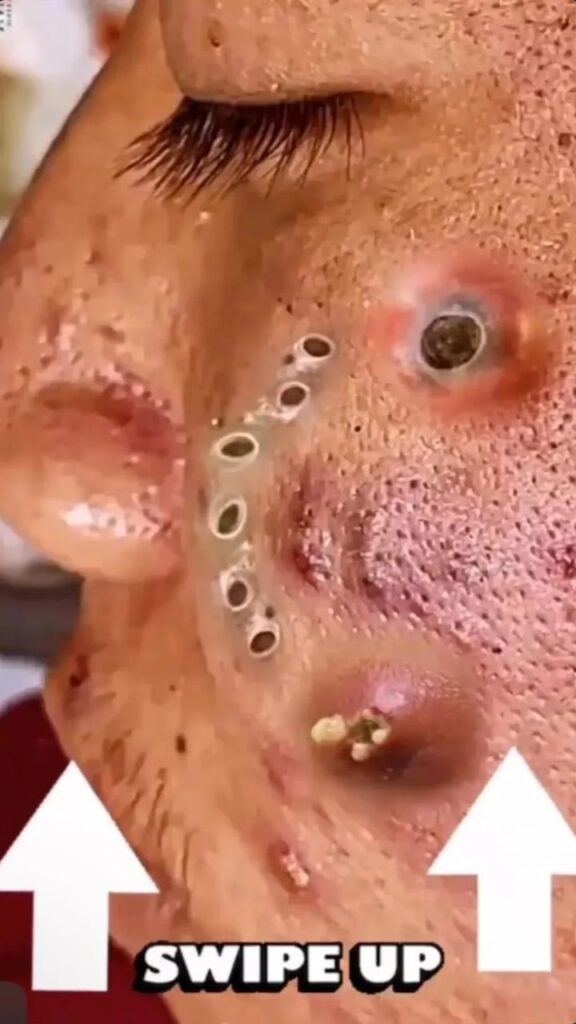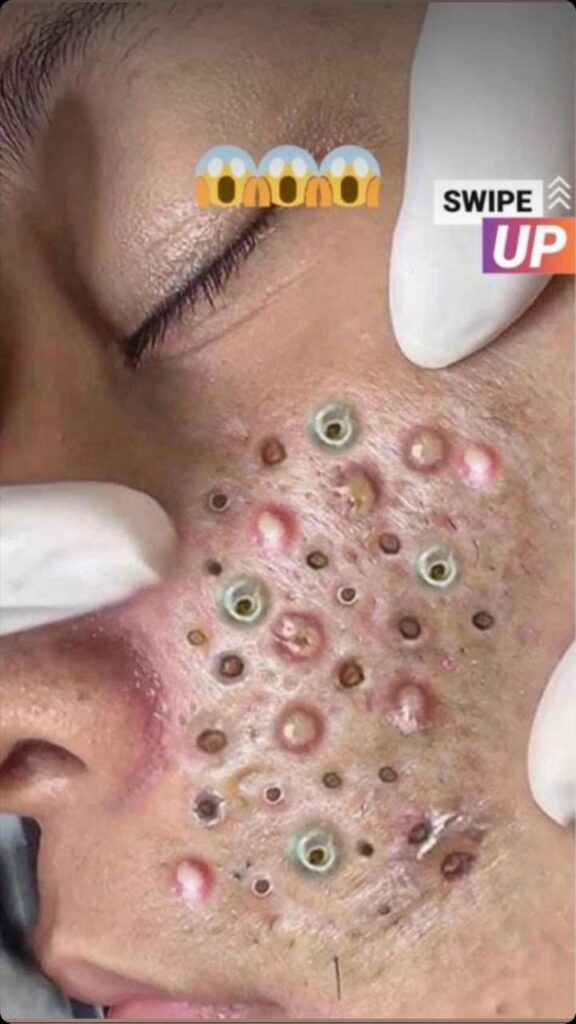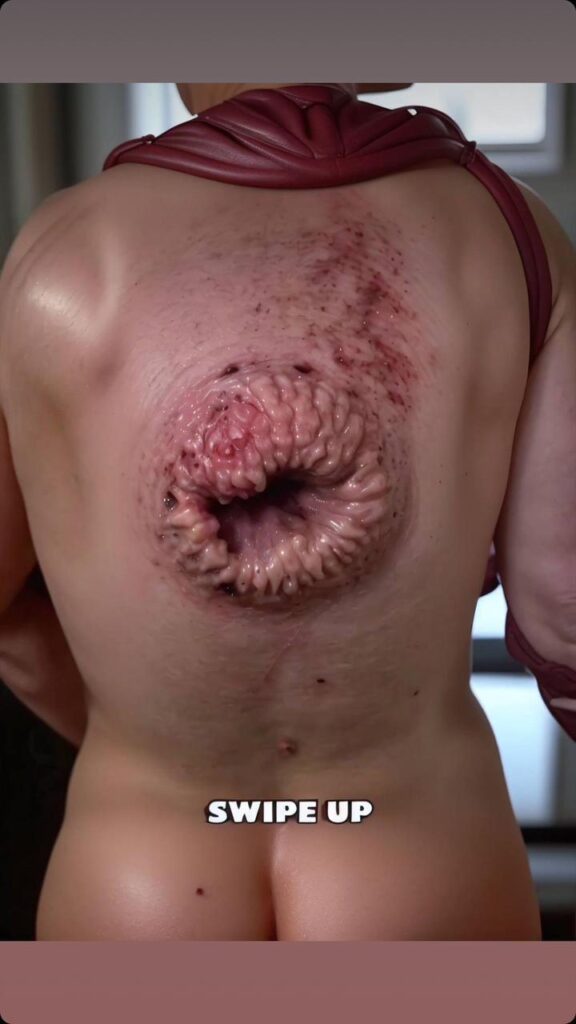Acne vulgaris is the medical term for common acne. This it includes black heads, white heads and other forms of pimples on the skin. Acne Visual Dictionary You often get breakouts on your face, chest, shoulders, and back. Mild acne can usually get better with over-the-counter treatments you can buy at the store. However, if your acne is more severe, it’s best to see a dermatologist for help.
Comedones
A comedo is a pore that gets blocked by oil and dead skin. These blocked pores can turn into whiteheads or blackheads. Products that clog pores are called “comedogenic.” Makeup that is “noncomedogenic” won’t clog pores and is less likely to cause acne. You can find more information in the Acne Visual Dictionary.
Blackheads
Blackheads are clogged pores that are open on the skin’s surface. They are filled with extra oil and dead skin cells. The black color isn’t from dirt; it happens because light reflects off the clogged pores. You can usually treat blackheads with store-bought medicines. They are one of the common Types of Acne that people deal with.
Whiteheads
Whiteheads are clogged pores that stay closed on the skin’s surface. They form when oil and dead skin cells block a pore, stopping it from opening. The same store-bought treatments used for blackheads often work well for whiteheads too.
Papules
Papules are small red or pink bumps that happen when clogged pores get inflamed. They can feel tender or sore if you touch them. It’s important not to pick or squeeze papules, as this can make the swelling worse and lead to scars. Having many papules might mean the acne is moderate to severe, making it one of the Types of Acne that can be more serious.

Pustules
Pustules are a type of pimple that is red with a white or yellow center filled with pus. They look like whiteheads but have a red area around them. Do not pick or squeeze them, as this can cause scars or dark spots on the skin.
Nodules
Nodules are big, soft bumps under the skin that feel hard on the outside. They can happen a lot and may cause scars. Some nodules don’t need special treatment and can’t be treated with regular medicines. The best thing to do is see a dermatologist. They can give you stronger medicines to help with your skin issues. You can also look at the Acne Visual Dictionary for more information.
Cysts
Cysts are large bumps filled with pus that look like boils. They can be tender and may leave a scar and are more or less similar to nodule formations. It’s important to visit a dermatologist for treatment because cysts are a more serious type of acne. They fall under the Types of Acne that need professional care.
.Mild Acne
Acne is considered “mild” if you have less than 20 whiteheads or blackheads, fewer than 15 red bumps, or fewer than 30 total spots. Mild acne is usually treated with over-the-counter creams or gels. You may start to see a big improvement in about eight weeks.
Moderate Acne
If you have 20 to 100 whiteheads or blackheads, 15 to 50 red bumps, or a total of 30 to 125 spots, your acne is considered moderate. Doctors typically recommend prescription treatments for moderate to severe acne. It may take several weeks to see improvement, and sometimes your acne might seem worse before it gets better.
Severe Nodulocystic Acne
People with severe nodulocystic acne have a lot of painful bumps and cysts on their skin. The bumps can look dark red or purple and may leave scars. It’s important toVisual Dictionary see a dermatologist quickly to help prevent scarring. In some cases, the doctor might give shots of medication into the bumps and cysts to make them smaller and hurt less.
Acne Conglobata
Acne conglobata is a very severe form of acne. It has many painful bults that are fixed under the skin. Such acne can occur at parts of the skin which reveal symptoms on the neck, chest, hands, arms, butts and it is normally accompanied by scarring. Its occurrence is higher among males, and it may be triggered in part by the use of anabolic steroids or testosterone. This is why one must see a dermatologist as soon as possible to receive the proper treatment .
Acne Mechanica
Acne mechanica happens when heat, rubbing, and pressure irritate the skin, usually from wearing sports gear like helmets or baseball caps. It’s often called “sports acne” because many athletes get it. To prevent this, wear soft clothing under your sports gear and shower right after you play.
Topical Therapy
Topical therapy is acne medicine you apply directly to your skin, like gels or creams. Over-the-counter products can often help with mild acne. They might contain ingredients like benzoyl peroxide, salicylic acid, or sulfur. For more severe acne, doctors can prescribe stronger creams, like antimicrobial or retinoid creams. These can be used alone or with other ingredients to improve results.
Systemic Therapy
Systemic therapy is acne medicine that you take by mouth. Antibiotics like tetracycline, minocycline, doxycycline, or erythromycin can help with moderate to severe acne by fighting bacteria and reducing swelling. Other treatments include birth control pills, which can help some women with acne, spironolactone, which is a hormone pill, and isotretinoin, a strong vitamin A medicine. Isotretinoin is usually used for severe acne or when other medicines don’t work. If you take isotretinoin, you will need to see your dermatologist regularly during treatment.



